
Is a Heated Freestanding Bathtub Worth It?
In recent years, the bathroom has evolved from a purely functional space to a sanctuary of relaxation and rejuvenation. One
Choosing the right bathtub can seem quite daunting at first. Which is the right one for you? Do you want comfort over affordability? Aesthetic over practicality? Do you want it to be round or rectangular? How many walls should be around it? Hopefully today we can find a bathtub that fits your bath, your wallet, and your heart.
Jump to your bathtub type:
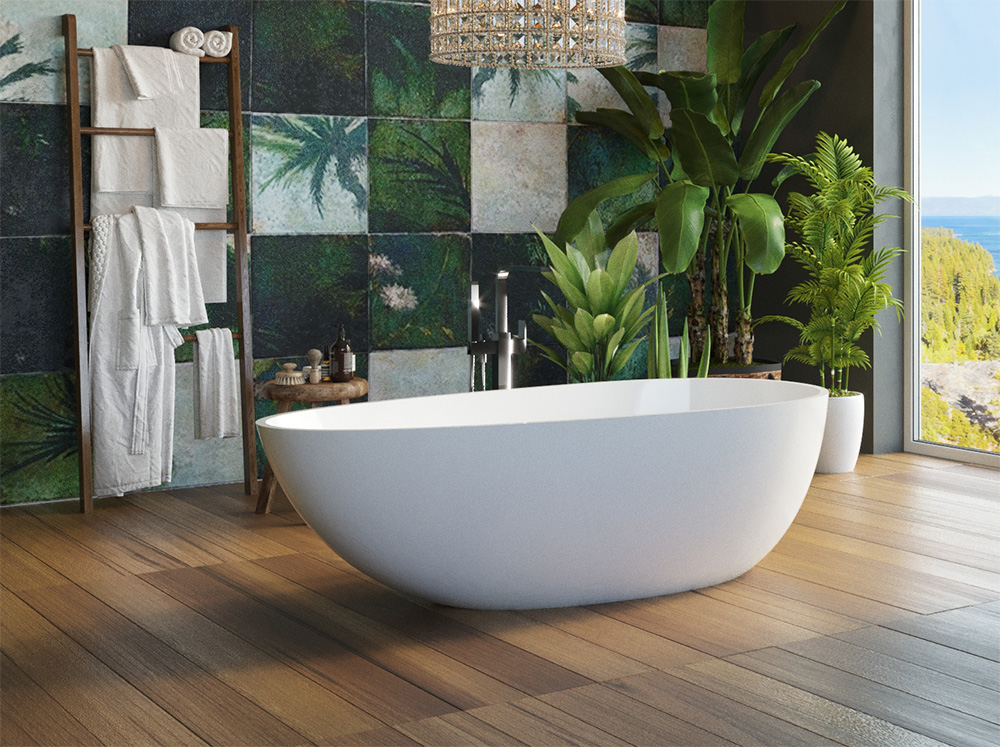
A freestanding bathtub is a bathtub that is finished on all sides and stands on it’s own.
When it comes to aesthetics, freestanding bathtubs easily beat out the competition. Carrying a unique look that draws from the material used, a freestanding bathtub can easily be considered a piece of furniture rather than just another bath appliance.
Installation is easy-simply hire a plumber to sort out your piping needs and place wherever you desire.
When it comes to style, freestanding bathtubs offer many different choices as many of them are custom made.
As stated earlier with installation, finished sides means you can actively dictate where your tub is located independent of wall limitations unlike drop-in tubs. As such, freestanding bathtubs allow you creative freedom to furnish your bathroom your way.
Freestanding bathtubs are a bit on the pricey end of things, but overall, they make worthy investments as they can easily last the test of time
Freestanding bathtubs do tend to carry a bit of extra weight, so only install on a reinforced floor that you know can sustain the additional weight. As they are much larger in size, you will most likely deal with additional water weight in addition to their overall heftiness, so plan accordingly.
Yes, freestanding bathtubs easily hold their value over time, making them a worthwhile investment in the long term.
No, freestanding bathtubs are generally quite easy to clean. Though usually it will depend on the material used, traditional methods of non-abrasive cleaners will get most if not all of the major scum and build up in your bathtub.
You can find quite affordable freestanding bathtubs at Badeloft as well as a host of resources to help you choose the correct bath fixture for your needs.
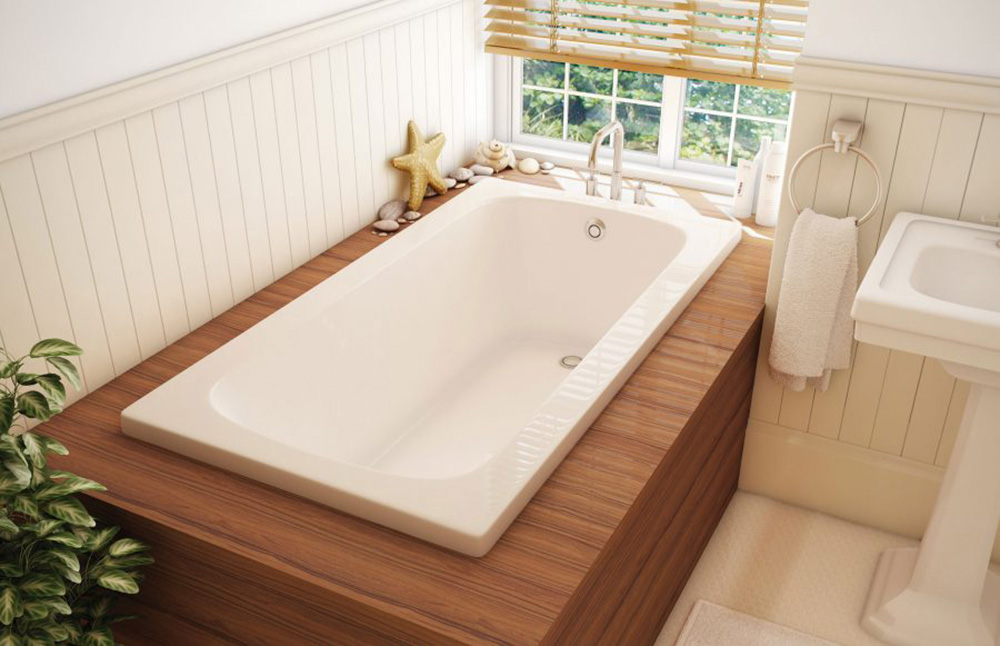
Source: http://junkart.me/terrific-alcove-bathtub-definition-images/stupendous-modern-bathtub-8-cs-alcove-or-drop-bathtub-images/
An Alcove bathtub is a bathtub that is nestled into the wall or ‘alcove’ Usually fitted into a three wall scheme to maximize your space.
Alcove Bathtubs are quite affordable and are priced very similarly to drop-in bathtubs
Alcove bathtubs are quite easy to clean and maintain
As alcove bathtubs are usually fitted depending on your wall set-up, these bathtubs tend to save space compared to others on the market
While other bathtubs have options in shape and size, alcove tubs are far more limited. Most if not all the designs are rectangular that must be placed against a wall.
While it may save space, alcove bathtubs are far more limited in general placement as they must be placed within a three-wall structure.
The primary difference between an alcove bathtub and a skirted bathtub just depends on whether the bathtub is installed in an alcove. Other than that, both bathtub types are the same as they both require a three-wall installation.
The primary difference between an alcove tub and a drop in is their placement. An alcove tub must be placed with at least two adjacent walls where a drop in can literally be ‘dropped’ wherever is desired. As a result, drop in tubs also have a wider variety of style options as they are not as restricted in their installation.
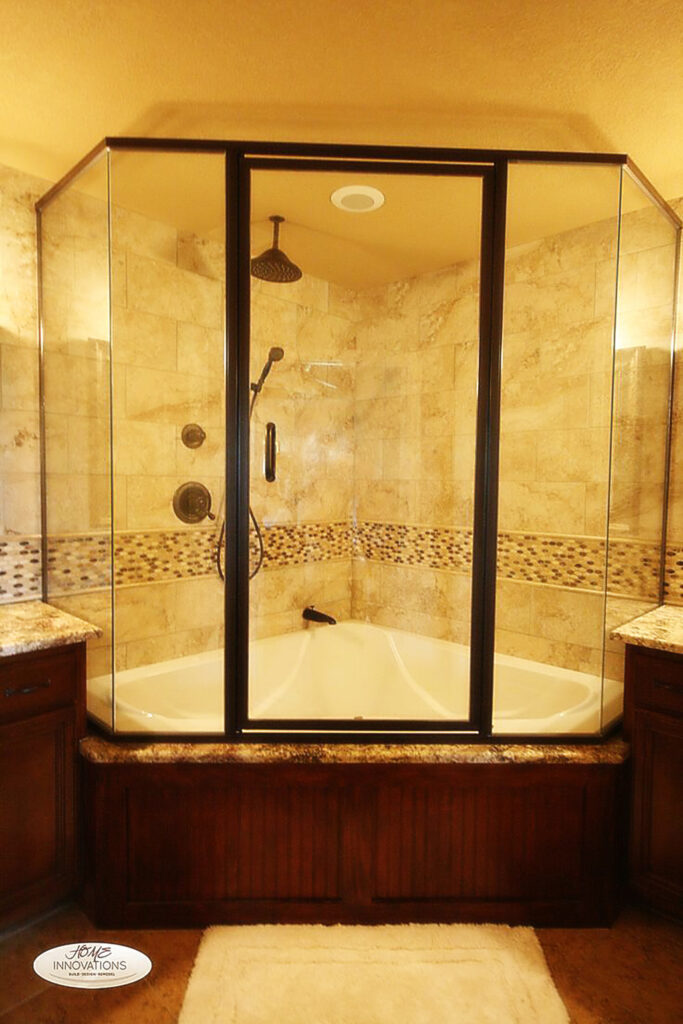
Source: https://www.pinterest.com/pin/535998793133441832/
A bathtub shower combo is a bathtub with an attached shower, commonly either a skirted or drop in bathtub, though there is no real limitation on adding a shower to your bathtub.
Having a shower and a bathtub gives you more options-whether you want a deep rinse or to go for a long soak, this combination can do it all and suit the needs of your household quite easily
Installing a shower to your bathtub is quite affordable and typically the combo will be cheaper than buying separate fixtures
As most homes usually have either a bathtub or a shower, having a combination may increase the value of your home.
Though there is added flexibility in combining your shower and bathtub, some prefer either a bathtub space or a shower space, so decide which is best for you and your family’s preference.
It is more expensive buying either a shower or bath compared to buying the combination together.
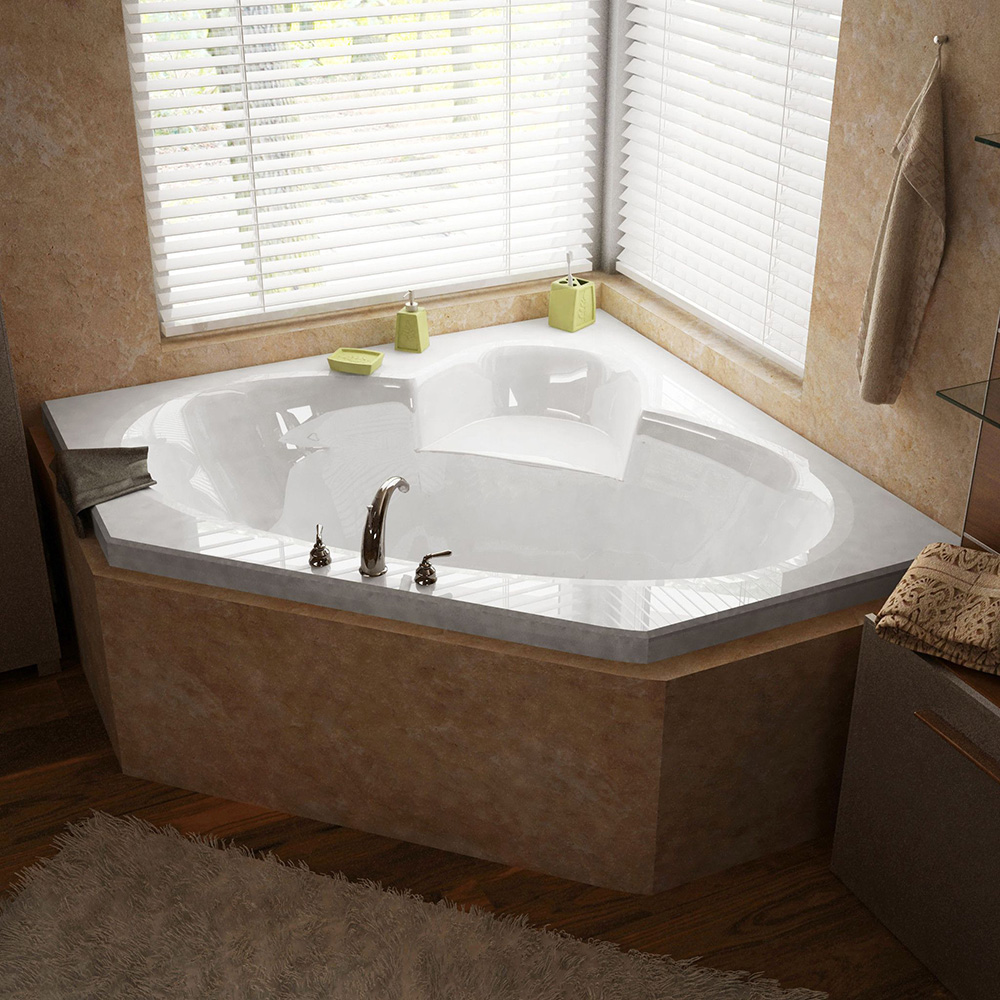
Source: https://www.pinterest.com/pin/355432595576216382/
A corner bathtub is a bathtub that is designed to fit a corner or more confined space and is round or smaller in size. Typically these bathtubs are designed for more rigorous soak sessions.
Visually, corner bathtubs are quite striking as their more unique shape allows for a smoother look to your aesthetic
Corner bathtubs come in a wide variety of styles and colors. Due to their design, there are also options for whirlpool and jacuzzi style jets in place
Though it does fit in most corners, corner bathtubs do tend to fill more on the bulky side of things, so make sure you have a large enough space carved out for installation
Due to the nature of the design, corner bathtubs are more difficult to clean compared to more traditional bathtubs as there is greater depth and no active corners, making access for cleaning a bit more difficult.
With the overall design of the corner bathtub, there are little to no shower options, limiting the use of this bathtub to just soaking needs.
Standard dimensions for a corner bathtub are 5ftx5ft or 60 inches by 60 inches with a water depth of 1.6 ft or 20 inches.
Compared to a freestanding bathtub, a corner bathtub is about half it’s overall size.
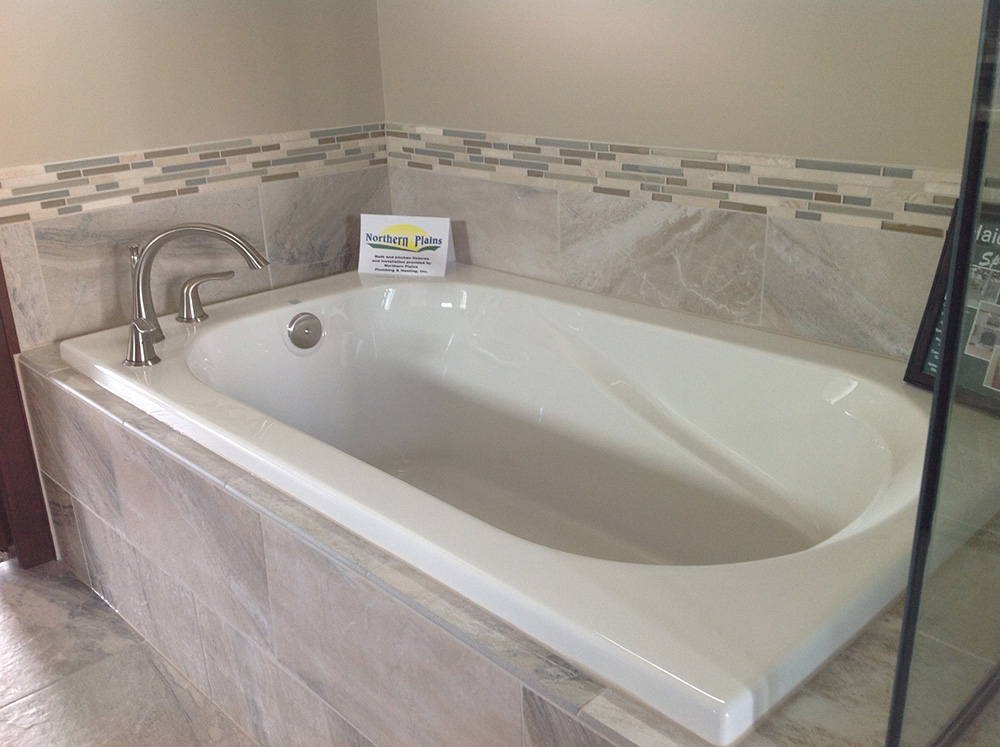
Source: https://www.pinterest.com/pin/161988917821222507/
A drop in bathtub is a bathtub that has no finished or cut sides and is usually placed or dropped into an open surface.
Drop in bathtubs come in a wide variety of colors and styles, allowing greater flexibility in choosing one for your needs.
Drop in bathtubs are shallow with just the rim and inner part exposed, making it much easier to clean and maintain.
Drop in tubs are much cheaper than other varieties, such as corner bathtubs.
As drop-ins are built-in fixtures, once secured, they are more difficult to replace than freestanding tubs.
Unlike freestanding bathtubs, drop-ins require more considerations with plumbing and pipes, making it a bit more unwieldy to install than the former.
Drop in bathtubs are commonly made out of fiberglass, acrylic, porcelain, cast iron, marble and stone resin, though other bathtub materials can be used for a heftier price tag.
Typical dimensions for drop-in bathtubs are 5ftx 2.5ft or 60 long, 30 inches wide with a water depth of 16 inches or 1.3 ft.
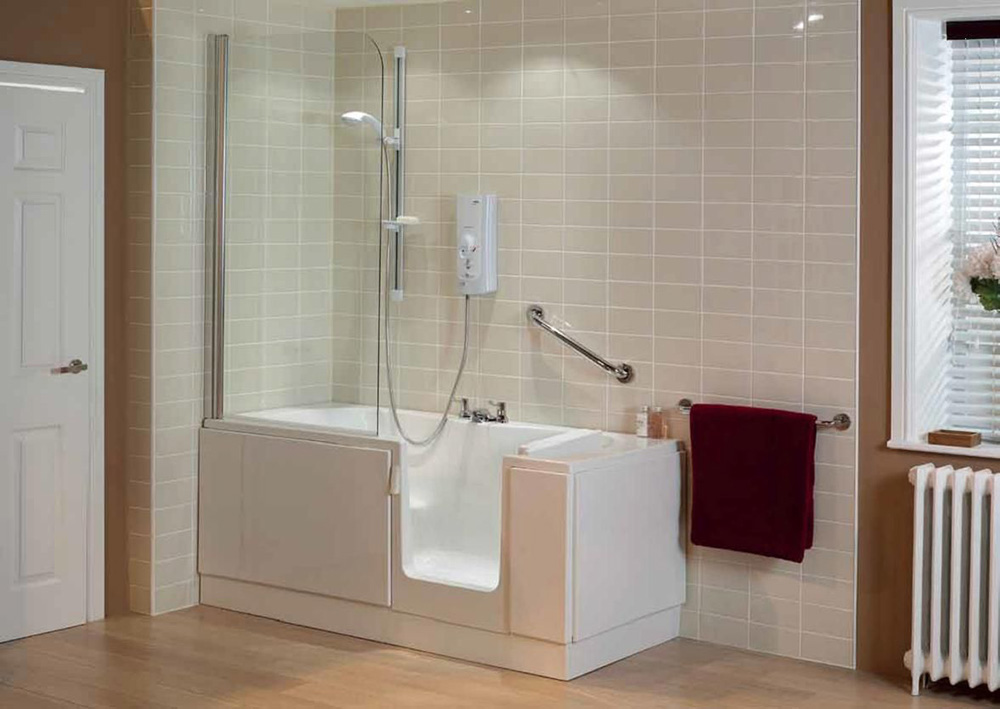
Source: https://www.pinterest.com/pin/370843350547437087/
A walk in bathtub is a bathtub with a seat built in that allows for comfort and ease of bathing. This is reinforced with a door that opens, allowing a secure way for exiting and entering the bathtub. There are also rails and handles along the side to further aid in this.
With multiple handrails and other options such as feet grips, walk in bathtubs are a great addition for those that have mobility issues when accessing the shower, namely elderly or disabled persons. The door also provides another layer of security that other bathtubs do not have.
The biggest problem with walk in bathtubs is that the door must be closed for water to begin filling. Which means you cannot prefill or preheat your bathtub, leading to cases of sitting in the cold as you wait for this particular type of bathtub to fill with water. Draining is much the same, though companies have created faster filling faucets to amend this flaw.
Walk in bathtubs also carry a high volume of water, causing a heavy strain on your water heater. As such, with continual use, you should be expected to replace your water heater regularly with a walk in tub in your home.
As walk in bathtubs are generally a great deal more complicated than your typical drop-in or corner bathtub, a professional is advised for installing on in your home.
Walk in bathtubs generally start at around $1,800 USD on the low end, and can run easily $5,000 USD on the high spectrum.
It takes around 45 gallons to fill a walk in bathtub
No. Walk in bathtubs are generally not covered by insurance.
Therapeutic bathtubs or hydrotherapy bathtubs are bathtubs that are designed for soaking and creating a more relaxed bathing environment. These bathtubs typically carry a more medicinal purpose than just cleanliness, usually have a deeper water depth for more therapeutic treatment. Similar to a jacuzzi or a bathhouse, they are meant for full submersion as jets and pulsing warm water create an environment that both detoxifies and relieves stress in the body.
A soaking bathtub is a bathtub that has more water depth, allowing for full submersion. This in turn helps to relax and warm tense or sore muscles in the body which also can help to de-stress and calm oneself. For reference, Corner bathtubs and many freestanding bathtubs are considered soaking bathtubs.
Soaking tubs can either be round or elongated, giving you more flexibility depending on taste and space requirements. They also come in a wide variety of materials, allowing for more customization based on individual tastes.
A soaking bathtub adds a nice flair to any bath space, promoting it as the centerpiece of the room with it’s elegant design.
In general, most soaking tubs are quite large in size, so plan your space accordingly if you wish to accommodate one.
An ofuro or furo, is a Japanese wooden soaking tub. They are generally more ornate than traditional soaking tubs, as each one is custom-made to preserve the quality of the tub. Their size is slightly bigger than a traditional drop-in, allowing for at least two adults to fit. Ofuros are limited to a specific type of wood known as Hinokiand, which is an aromatic wood that must be properly maintained and sealed against moisture.
The primary difference between a soaking bathtub and a regular bathtub outside of material and price is mostly about water depth. Typical bathtubs 13-14 inches or 1.15 ft where soaking tubs start at around 20 inches or 1.6 ft.
An air bathtub is a bathtub with powered jets that massage you as you bathe. The distinguishing feature of an air bath is that it uses air to power their jets as opposed to using the running water to do so like a whirlpool. In general, they are used for soaking and relaxation, though a strong case can be made for physical therapy as well.
With powered jets and aromatherapy bath oils, an air bath can create a therapeutic and calming bath environment even more so than a traditional soaking bathtub. The air creates thousands of little bubbles that envelop and massage the body
With air-pressured jets, cleaning and maintenance is easy and simple
With the air circulation, there is less standing water left over from the bath as opposed to water jets
Make no mistake that jetted bathtubs are a luxury. As such, you are looking at $1,500 on the low end and as high as $25,000 on the high end of things. Coupled with installation and heating costs, the price will continue to soar.
The difference between an air bathtub and a whirlpool is in the jets. Air bathtubs release warm air and a combination of bubbles to massage, so the effect is more gentle. Whirlpools use the water to massage you directly, adding much more pressure to the jet as compared to the former.
A whirlpool bathtub is a hydrotherapy tub that draws in water to create pressure through it’s jets. This means there is stronger water pressure compared to air bathtubs, which in turn means the jets can easily provide a deeper tissue massage for the user.
As the water pressure is much stronger in this kind of bathtub, whirlpools are great for massaging tense and sore muscles
With the aid of bath oils, a whirlpool can create a wonderful environment for relaxation
Since the jets absorb water instead of air, they must be properly maintained much more frequently than the air bath
Price
Make no mistake that jetted bathtubs are a luxury. Though whirlpools are the exception as they start around $800 USD but can climb to $20,000. Coupled with installation and heating costs, the price will continue to soar.
Standard size for whirlpools start at 30 inches by 60 inches but can go to 80 inches by 60 inches.
A common question, but there is actually no difference between the two as a whirlpool is considered a type of jetted bathtub.
A whirlpool and air combo bathtub is a bathtub that mixes the bubbles from the air jets and water pressure from the whirlpool, giving you the best of both worlds
As the water pressure is much stronger in this kind of bathtub, whirlpools are great for massaging tense and sore muscles
With the aid of bath oils, a whirlpool can create a wonderful environment for relaxation
With powered jets and aromatherapy bath oils, an air bath can create a therapeutic and calming bath environment even more so than a traditional soaking bathtub. The air creates thousands of little bubbles that envelop and massage the body
Make no mistake that jetted bathtubs are a luxury. As such, you are looking at $1,500 on the low end and as high as $25,000 on the high end of things. Coupled with installation and heating costs, the price will continue to soar.
There are many factors in considering your bathtub: versatility, space, size, material, aesthetic and cost. Keep in mind that luxury carries it’s own cost outside of your initial purchase. So do well in considering your space carefully and be practical before making your purchase.
For those looking to save space or feature a specific tile or foundation design, undermount tubs provide a great way of showing off your house. As the name suggests, undermount tubs are installed directly below a foundation or rim, which ensures that the tub is flush with the surrounds. This makes cleaning much easier compared to a traditional drop-in style tub, however, ensure your tub is properly sealed to prevent excess moisture from potentially damaging the foundation and tub.
Something Different-Undermount tubs enjoy the same variety of styles, materials and colors similar to drop-in bathtubs. While the installation is a bit more complicated, undermount tubs provide a seamless look that is hard to beat.
Weight-Undermount tubs don’t require additional weight as they are installed below the foundation or rim of your bathing area. This makes undermount tubs generally more secure than drop-in tubs.
Clawfoot tubs are a classic freestanding design that have certainly stood the test of time. A clawfoot tub has four pedestal legs on each corner of the tub which provides a unique aesthetic that sets it apart from other bathtubs. Clawfoot tubs can be placed anywhere in the home, offering a great amount of freedom for spacing needs. While clawfoot tubs used to be quite large, you can find almost any size of these tubs to fit your home.

Eric is the founder and president of Badeloft USA. He has been the president of Badeloft’s US division for over ten years and oversees all marketing and branding aspects of Badeloftusa.com.
His expertise lies in small business development, sales, and home and bathroom industry trends and information.
Contact us with any business related inquiries.
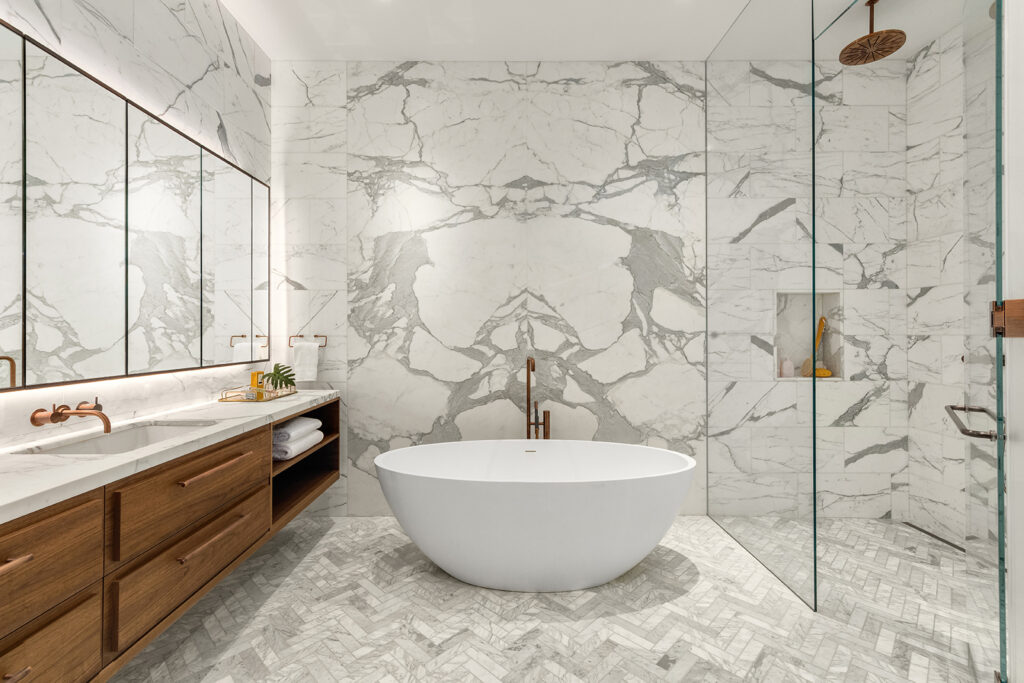
Free material samples and tub templates

In recent years, the bathroom has evolved from a purely functional space to a sanctuary of relaxation and rejuvenation. One
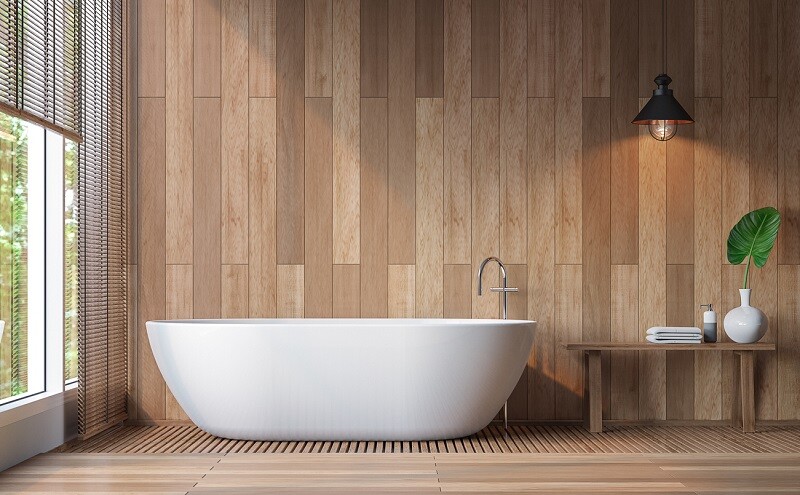
When choosing a freestanding bathtub, the size is one of the most important factors to consider. Freestanding bathtubs offer a
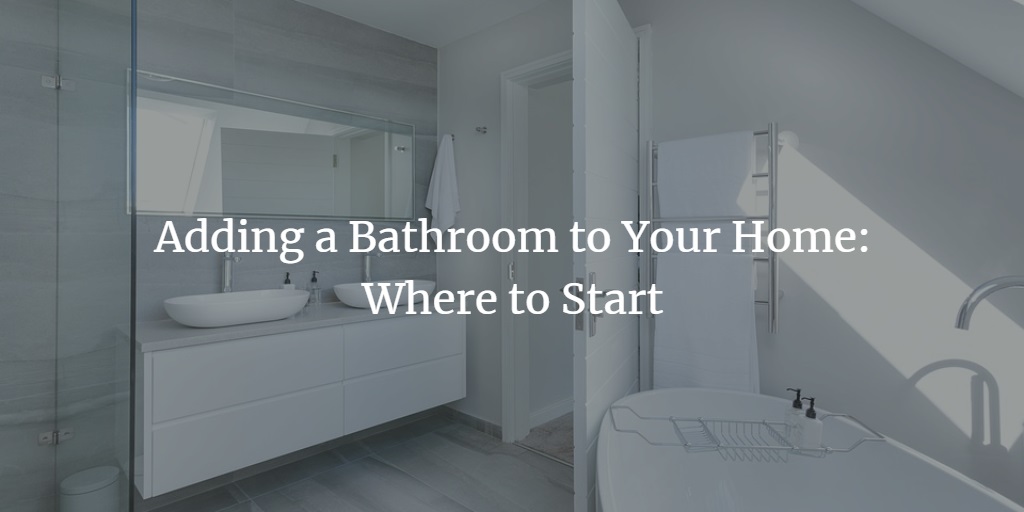
The bathroom is an essential aspect to any home, be it new or remodeling an older home and subsequently, adding
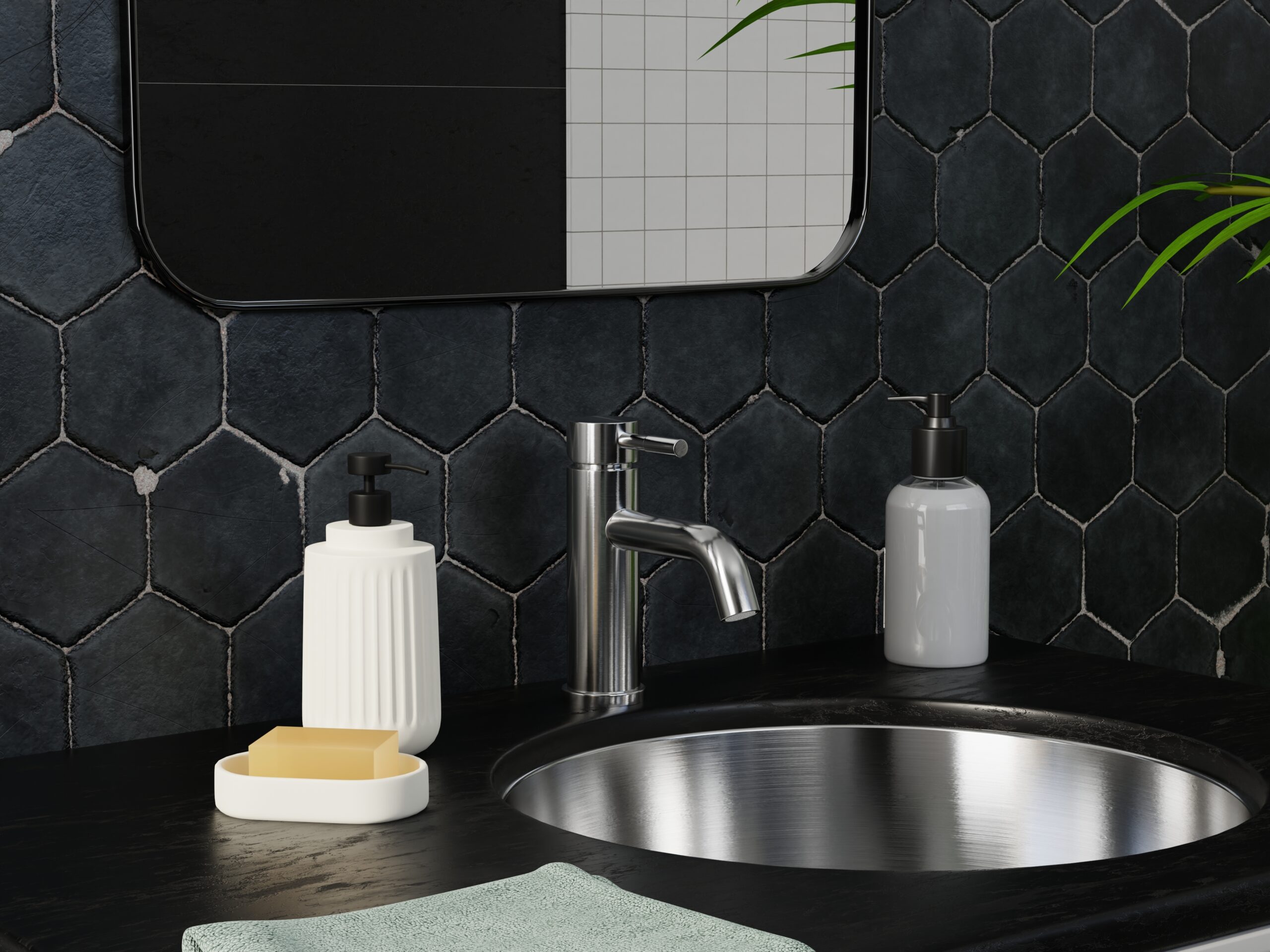
Looking to add more flair to your old bathroom? Well, a great place to start is replacing your old faucets
Fill out the form below to request a free material sample
"*" indicates required fields
"*" indicates required fields
"*" indicates required fields